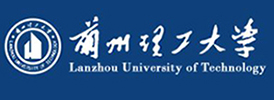2016 International Conference on Intelligent
Computation
August 2-5,2016
Lanzhou,China
(
http://www.ic-icc.cn/2016/index.htm
)
 ICIC2016
Online Attendance Confirmation and Hotel Reservation System:
ICIC2016
Online Attendance Confirmation and Hotel Reservation System:
Conference Venue
ICIC2016 Conference Venue is Lanzhou
Hotel (http://www.lanzhouhotel.com/),
which is a four star hotel. It is located at China's Silk
Road city, adjacent to the Provincial Tourism Bureau, and
office of air ticket, and around the adjacent travel. The
hotel is located at No.486 of Donggang West Road, Lanzhou
City, Gansu Province, the transportation is very convenient,
72 kilometers away from Lanzhou Airport, three kilometers
from the Lanzhou Railway Station, 1.5 km from Lanzhou Bus
Station.
Lanzhou Hotel was
built in 1956, four decades in Gansu Province has been an
important place for foreign exchanges, many of our party and
state leaders, foreign dignitaries and friendship groups
have stayed here. Fan-shaped building complex Chinese and
western walls of the hotel, looks simple and elegant, is
surrounded by a garden pavilions, elegant environment,
fresh, Chinese and foreign guests Fitch said, "Long on the
first store."
Location and Road Map


To check more road map lines, please use the link:
http://www.ic-icc.cn/confirm_reserve/map.html
Room Rates

注:
1)房价不含早餐,早餐40元/人;
2) 所有房间备有免费宽带和WiFi,
国际国内长途电话和空调;
3)为了保证大家的安全,请预定我们安排的酒店。
Notes:
1)Breakfast is not included, breakfast is 40
RMB/ person;
2) All rooms are equipped with free
broadband, domestic and international long-distance
telephone, and air condition;
3)In order to
ensure everyone's safety, please book our hotel
arrangements.
Lanzhou Hotel
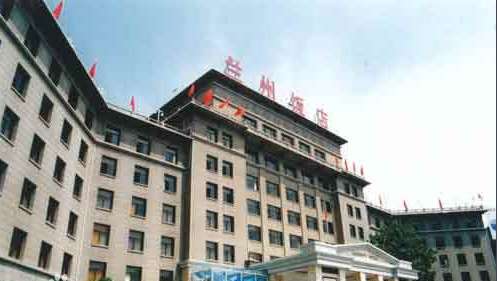
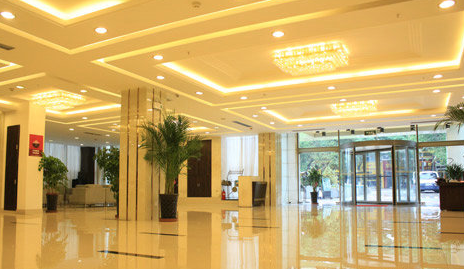
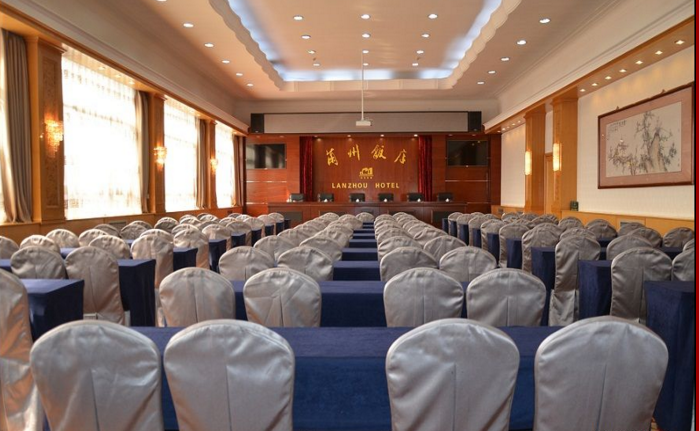
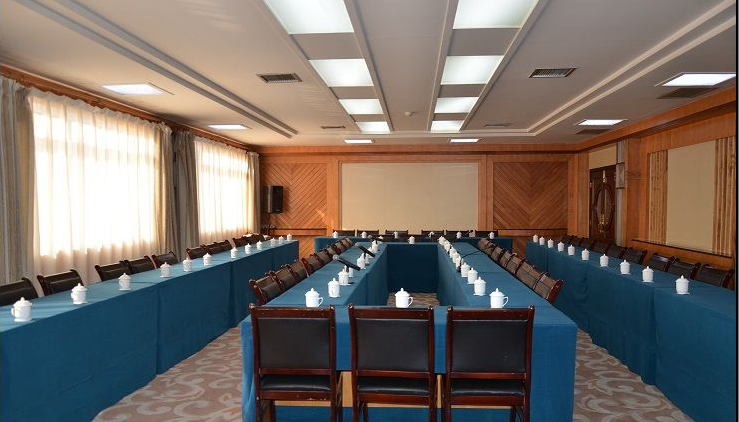

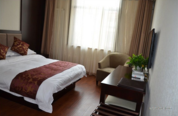
Lanzhou Impression
 Lanzhou, named Jincheng (Gold City) in ancient times, has a
history of more than 2,000 years. It is now the capital of
Gansu Province. Lanzhou is located on the upper reaches of
Yellow River and at the geometric centre of China’s
continental territory. With the Yellow River going through,
the city is sandwiched by mountains on the northern and
southern banks.
Lanzhou, named Jincheng (Gold City) in ancient times, has a
history of more than 2,000 years. It is now the capital of
Gansu Province. Lanzhou is located on the upper reaches of
Yellow River and at the geometric centre of China’s
continental territory. With the Yellow River going through,
the city is sandwiched by mountains on the northern and
southern banks.
Lanzhou has a total area of about 13,000 square kilometers and includes three counties and five districts under its jurisdiction. There are 38 nationalities dwelling here. The average altitude of Lanzhou is 1520m. The weather in Lanzhou is comparatively good. Winters are not severe, nor is it extremely hot in summer. Average annual precipitation is 360mm, annual average temperature 9.3 ℃, in midsummer the average temperature is only 22.6℃, suitable for Habitat. Average 2446 hours sunshine hours, frost-free period for more than 180 days. City tree: pagoda tree; flower: Rose. In summer and autumn, the city is full of melons and fruit; the air is heavy with aroma of flowers. That is the best time to visit.
Raising not only the people of the Yellow River in Lanzhou, also brings a wealth of specialty here, Bailan melon, soft infant pears, winter fruit pear, white powder peach, watermelon and other fruits and prestigious, lily, black melon seeds, grievances rose, bracken, hookah, etc. Tute Product renowned Chinese and foreign, so Lanzhou Art Institute of Chicago to become a “Fruit City.”
In the successive hundreds of years, Lanzhou remained a significant city along Hexi Corridor and achieved a long period of prosperity. Due to its long history and special geological position, Lanzhou is endowed with many tourist attractions.
1.Five Spring Park

Inside the park there are five springs Ganluquan
(Sweet-dew Spring), Juyuequan(Moon-scoping Spring),
Moziquan(Child-seeking Spring), Huiquan (Benefit-giving
Spring) and Meng Spring, hence the name of Five Spring
Mountain. According to a legend, these five springs were
found by Huo Qubing, a famous general of Han Dynasty. It
is said that when he passed through this area leading
troops into the battle, they were thirsty and found no
water nearby, so the general whipped the hill and the five
springs emerged. These springs, small as they are, have
never dried up since then. The water, clear and sweet,
produces a rare scene in the dry loess plateau. On the
main gate of the park, there is an inscription “it is
pleasure to visit this famous mountain”, written by Shu
Tong, a famous calligrapher in China.
2. Zhongshan Iron Bridge

White Pagoda Park is famous for a white pagoda of Yuan
Dynasty. The white pagoda is snow-white with a round
foundation. 17 meters high, it has 7 floors and 8 sides on
which are many large and small figures of Buddha. On the
roof corners, hang copper bells chiming in the breeze. The
sound is both solemn and mysterious. The White Pagoda Park
is an excellent vantage point for a bird’s-eye view of the
city.
3. White Pagoda Park

White Pagoda Park is famous for a white pagoda of Yuan
Dynasty. The white pagoda is snow-white with a round
foundation. 17 meters high, it has 7 floors and 8 sides
on which are many large and small figures of Buddha. On
the roof corners, hang copper bells chiming in the
breeze. The sound is both solemn and mysterious. The
White Pagoda Park is an excellent vantage point for a
bird’s-eye view of the city.
4. Waterwheel Garden

Waterwheel were used to draw water from the Yellow River
for irrigation in ancient times. It was first invented in
Eastern Han Dynasty(25-220AD) and was introduced into
Lanzhou in 1556AD. Since Lanzhou once had more
Waterwheels than Hama City in Syria, Lanzhou is now
famous for the city of Waterwheel.
Before
Zhongshan Bridge was built there were many floating
bridges over the Yellow River, but only one existed for
a relatively long period. This bridge was called Zhen
Yuan Floating Bridge and was made up of more than 20
ships, tied up by ropes and chains. It floated on the
river in order to help people pass over, but it was
neither solid nor safe enough. Almost every year floods
destroyed the bridge or even killed people. Problem also
arose in the winter, when ice would build up on the
river, so the bridge would have to undergo the costly
process of being disassembled and then re-built in the
spring. Used for over 500 years, the Zhen Yuan Floating
Bridges was finally retired in 1909, when an iron bridge
was built. This new bridge is what we call the First
Bridge over the Yellow River.
5. Statue of Mother Yellow River

The Yellow River is considered as the Mother of Chinese
Nation, Lanzhou is the only provincial capital city that
Yellow River runs through. Among all the sculptural works
that depict the Yellow River, the statue in Lanzhou City
is the most beautiful one in China, and she has the
higher artistic value. She was created by the famous
sculptor Mrs. He’e in Gansu province and produced by
Beijing sculptural factory on the April 30,1986. She is a
granite sculpture which is 6 m in length, 2.2m in width,
2.6 in height, and total weight is more than 40 tons.
The
statue consists of a gentle mother and a lovely boy,
which symbolized the Yellow River and the Chinese
nation. the carved water wave and fish figure on the
base come from the ancient painted poetry art of Gansu,
which shows the long historical culture of Gansu.
Attractions around Lanzhou City
1. 1.The Mogao Caves
 The Mogao Caves, also
known as the Mogao Grottoes or the Caves of A Thousand
Buddhas, are set into a cliff wall of Echoing Sand
Mountain about 25km southeast of Dunhuang, the oasis city
in the Gobi desert. This honeycomb of caves was
constructed over a millennium, from the 4th to the 14th
centuries, and represents the height of Buddhist art and
the world’s richest treasure house of Buddhist sutras,
murals and sculptures.
The Mogao Caves, also
known as the Mogao Grottoes or the Caves of A Thousand
Buddhas, are set into a cliff wall of Echoing Sand
Mountain about 25km southeast of Dunhuang, the oasis city
in the Gobi desert. This honeycomb of caves was
constructed over a millennium, from the 4th to the 14th
centuries, and represents the height of Buddhist art and
the world’s richest treasure house of Buddhist sutras,
murals and sculptures.
During its heyday, the cave complex had thousands of
caves, and today, a total of 492 grottoes, 45,000
square-meters of murals, 2,400 painted statues and over
250 residential caves remains. Almost every grotto
contains a group of colorful paintings of Buddha and
Bodhisattvas and other religious paintings, or social
activities of different dynasties. The caves carved on
the cliff wall provide voluminous research material for
the study of all aspects of Chinese medieval society,
in areas such as religion, art, politics, economics,
military affairs, culture, literature, language, music,
dance, architecture and medical science. The rich
culture and art unearthed in the caves has even given
birth to a new field of study, called “Dunhuangology”!
The mural
paintings in existence today can be divided into
seven categories, including the jataka stories
depicting beneficence of Sakyamuni in his previous
incarnations, sutra stories depicting suffering and
transmigration, traditional Chinese mythology and so
on. Although the religious scriptures are primarily
Buddhist, written in Chinese, Uygur, Tibetan, Turkic
and other languages, Taoist, Manichean and Confucian
scrolls are also part of the collection.
Unfortunately, due to the corrupt and impotent
governments after the later Qing dynasties, many of
the treasures of the Mogao Caves were plundered by
heinous thieves like Aurel Stein, Paul Pelliot,
Langdon Warner and Albert von Le Coq, mainly by
theft but also through unfair transactions. These
treasures can now be found in places like Britain
and Germany.

According to historical records, in the year 336,
a monk called Le Zun came near the Echoing Sand
Mountain and suddenly had a vision of golden rays
of light shining upon him like thousands Buddhas.
He started to carve the first grotto to memorize
the accident and show his respect to the Buddha.
Other pilgrims and travelers followed for the
next thousand years.
During the Northern Wei Dynasty founded by the
Turkic-speaking Toba tribe, pilgrims restarted
to hewing grottoes after the preceding years of
turmoil, to depict their ideal heavenly world
which contrasted with their painful material
world. Forty of the Northern Wei caves remain
today. Shades of Indian Buddhism still can be
seen from the clothing, hair and facial
features of Buddhas. The finely chiseled
sculptures in the Wei caves show large heads,
wide faces, large noses, thin lips, high
cheekbones and curly hair, with slim and
ethereal figures. The females are high
breasted. The Buddhas, bodhisattvas and
disciples are quite and serene, in strong
contrast with the aggressive and fierce devils.
The Wei paintings often depict the patrons who
paid for cutting caves, as servants of the
Buddhas or as supplicants, usually small in
size.
During the short Sui Dynasty, the Mogao Caves
continued to boom and mark the end of the
foreign influence, slowly transitioning to
the more indigenous styles of central China.
There are now 78 Sui caves left. The statues
produced during the Sui Dynasty are mostly in
good condition and more formal than the Wei
statues. The Sui style shows statues with
fuller faces, longer earlobes, loosely draped
clothing and disproportionate upper bodies.
Jataka stories are still the main theme while
more varied subjects appear. The feitian, or
asparas, become more pretty and elegant.
Lotus flowers and other symmetrical patterns
are frequently used as decorations on the
ceilings.
The grottoes of Tang Dynasty represent the
most splendid period of the caves,
reflecting the highest level of artistic
achievement. Today, 220 of the Tang caves
remain. Most of the caves are square and
have three levels to lodge bigger
sculptures which were artistically
brilliant, gentle and realistic.
The
Buddhas became more like men, wearing
ornaments and jewels and dressed like
Tang nobles. The images of patrons became
bigger and tended to occupy important
places in the murals. The themes of the
murals focused more on Buddhist scripture
stories instead of jataka stories. This
Dynasty introduced scenes of cruising
aristocrats.
During the Five Dynasties, there was no
space left on the cliff, so some caves
were enlarged or repainted. As a
result, old paintings are now being
discovered lying under new ones.
Discovering the hidden caves has been
the main legacy left by this Dynasty.
Many
caves were restored during the Yuan
Dynasty. The murals depict various
Indian mandalas and bodhisattvas.
Some caves were decorated in Tibetan
style. After the Mongol reign, there
was no artistic development. In the
Ming Dynasty, Dunhuang was once
abandoned, and the caves gradually
faded into the sand of the Gobi
desert until a Taoist priest
discovered the treasure house in
beginning of the 19th century.
2.Maijishan Grottoes
 Maijishan (“Wheatstack
Mountain”), located on the northern side of the Qinling
Mountain Range and at a height of 1742m above sea level,
gets its name from its giant, haystack-like shape. The
mountain’s fame arises not just from its appearance, but
from the many Buddhist caves that are gouged into its
southwestern face. This is the fourth largest area of
concentrated Buddhist grottoes in China, after Dunhuang,
Datong and Luoyang. The area around and on the mountain
is one of the most beautiful sights in Gansu for both
stunning natural, and impressive man-made, scenery. The
mountain, studded with caves and strapped by many winding
walkways and spiral stairs, rises majestically from the
surrounding heavily wooded slopes, so any visitor here
with a bit of time on their hands could easily spend a
few days hiking and admiring.
Maijishan (“Wheatstack
Mountain”), located on the northern side of the Qinling
Mountain Range and at a height of 1742m above sea level,
gets its name from its giant, haystack-like shape. The
mountain’s fame arises not just from its appearance, but
from the many Buddhist caves that are gouged into its
southwestern face. This is the fourth largest area of
concentrated Buddhist grottoes in China, after Dunhuang,
Datong and Luoyang. The area around and on the mountain
is one of the most beautiful sights in Gansu for both
stunning natural, and impressive man-made, scenery. The
mountain, studded with caves and strapped by many winding
walkways and spiral stairs, rises majestically from the
surrounding heavily wooded slopes, so any visitor here
with a bit of time on their hands could easily spend a
few days hiking and admiring.
 It is the Buddhist
Grottoes (Maijishan shiku), some dated from as early as
the Northern Wei Dynasty (386-534 AD), that most
visitors come here to see. On arrival at the sight the
most prominent sculpture is the 16m Buddha that is
carved high up on the mountain. The grottoes, all
packed together on the sheer, rocky cliff faces below
and above this, look from afar like chambers of a
gargantuan beehive. On ascending the mountain, the
grottoes are divided into two sections, the western and
eastern, since the central section was almost
completely destroyed by an eighth century earthquake.
The western section is probably the better, with
statues and other Buddhist articles dating mainly from
the Northern Wei Dynasty to the Tang (618-907 AD). Just
ascending the mountain, on winding, rickety walkways
and spiral stairs, with the wooded mountain panorama
below, is a breath of fresh air for even the most
unconvinced China traveler.
It is the Buddhist
Grottoes (Maijishan shiku), some dated from as early as
the Northern Wei Dynasty (386-534 AD), that most
visitors come here to see. On arrival at the sight the
most prominent sculpture is the 16m Buddha that is
carved high up on the mountain. The grottoes, all
packed together on the sheer, rocky cliff faces below
and above this, look from afar like chambers of a
gargantuan beehive. On ascending the mountain, the
grottoes are divided into two sections, the western and
eastern, since the central section was almost
completely destroyed by an eighth century earthquake.
The western section is probably the better, with
statues and other Buddhist articles dating mainly from
the Northern Wei Dynasty to the Tang (618-907 AD). Just
ascending the mountain, on winding, rickety walkways
and spiral stairs, with the wooded mountain panorama
below, is a breath of fresh air for even the most
unconvinced China traveler.
The area itself should be proud of its statistics!
After centuries of renovation, expansion, partial
destruction and then restoration, the grottoes that
you can see today still number an impressive 194.
Within these can be found over 7,800 pieces of clay
sculptures and stone carvings, and murals with an
aggregate area of over one thousand square meters.
The stone sculptures that can be seen within the
caves are of rock that had to be imported to the
mountain, since the local rock was of too soft a
consistency. The clay sculptures, reflecting the rich
styles of high-ranking daily life, mainly portray two
distinct eras: the Northern Dynasties (386-581 AD)
characterized by slim figures and the Sui and Tang
Dynasties (581-907 AD) featuring plumper ones. The
only problem with the grottoes are that they are all
locked up and, unless you have brought a guide to
open them up, you will have to make do with the
limited lighting that the barred entrance affords.
For those on a budget this is not such a bad option,
since some of them are lit not too badly and the
views away from the mountain are worthwhile in
themselves. Guides, however, can be bought to open
them.
3.The silk road
 The region separating
China from Europe and Western Asia is not the most
hospitable in the world. Much of it is taken up by the
Taklimakan desert, one of the most hostile environments
on our planet. There is very little vegetation, and
almost no rainfall; sandstorms are very common, and have
claimed the lives of countless people. The locals have a
very great respect for this `Land of Death’; few
travellers in the past have had anything good to say
about it. It covers a vast area, through which few roads
pass; caravans throughout history have skirted its edges,
from one isolated oasis to the next. The climate is
harsh; in the summer the daytime temperatures are in the
40’s, with temperatures greater than 50 degrees Celsius
measured not infrequently in the sub-sea level basin of
Turfan. In winter the temperatures dip below minus 20
degrees. Temperatures soar in the sun, but drop very
rapidly at dusk. Sand storms here are very common, and
particularly dangerous due to the strength of the winds
and the nature of the surface. Unlike the Gobi desert,
where there are a relatively large number of oases, and
water can be found not too far below the surface, the
Taklimakan has much sparser resources.
The region separating
China from Europe and Western Asia is not the most
hospitable in the world. Much of it is taken up by the
Taklimakan desert, one of the most hostile environments
on our planet. There is very little vegetation, and
almost no rainfall; sandstorms are very common, and have
claimed the lives of countless people. The locals have a
very great respect for this `Land of Death’; few
travellers in the past have had anything good to say
about it. It covers a vast area, through which few roads
pass; caravans throughout history have skirted its edges,
from one isolated oasis to the next. The climate is
harsh; in the summer the daytime temperatures are in the
40’s, with temperatures greater than 50 degrees Celsius
measured not infrequently in the sub-sea level basin of
Turfan. In winter the temperatures dip below minus 20
degrees. Temperatures soar in the sun, but drop very
rapidly at dusk. Sand storms here are very common, and
particularly dangerous due to the strength of the winds
and the nature of the surface. Unlike the Gobi desert,
where there are a relatively large number of oases, and
water can be found not too far below the surface, the
Taklimakan has much sparser resources.
The land surrounding the Taklimakan is equally hostile.
To the northeast lies the Gobi desert, almost as harsh
in climate as the Taklimakan itself; on the remaining
three sides lie some of the highest mountains in the
world. To the South are the Himalaya, Karakorum and
Kunlun ranges, which provide an effective barrier
separating Central Asia from the Indian sub-continent.
Only a few icy passes cross these ranges, and they are
some of the most difficult in the world; they are
mostly over 5000 meters in altitude, and are
dangerously narrow, with precipitous drops into deep
ravines. To the north and west lie the Tianshan and
Pamir ranges; though greener and less high, the passes
crossing these have still provided more than enough
problems for the travelers of the past. Approaching the
area from the east, the least difficult entry is along
the `Gansu Corridor’, a relatively fertile strip
running along the base of the Qilian mountains,
separating the great Mongolian plateau and the Gobi
from the Tibetan High Plateau. Coming from the west or
south, the only way in is over the passes.
4.Jiayuguan
 Jiayuguan, is the
starting point for the western end of the Ming Dynasty
Great Wall, the scale of construction along the Great
Wall of the Ming Dynasty most spectacular, the most well
preserved a degree of military Ancient castles, is the
late Ming Dynasty and the Great Wall along the important
military stronghold, has been called the “huge
anti-China” “Hexi first pass,” said.
Jiayuguan, is the
starting point for the western end of the Ming Dynasty
Great Wall, the scale of construction along the Great
Wall of the Ming Dynasty most spectacular, the most well
preserved a degree of military Ancient castles, is the
late Ming Dynasty and the Great Wall along the important
military stronghold, has been called the “huge
anti-China” “Hexi first pass,” said.
Jiayuguan in the Hexi Corridor of the Department of
Chinese and Western (west central), have passed 631
years of history. Shanhaiguan, it has built as early as
2009.
That
the beginning of the Song, the general FENG Sheng
Zhenglu triumph in the execution of the way location
in the Hexi Corridor central, east Jiuquan, west of
Yumen, back-Montenegro, south of the Qilian Mountains
to the throat - Jiayu Highland Xi Lu Jian Guan. City
Commissioner five years before now designated Hongwu
(Year 1372), the last 168 years, completed in the
year 1540 completion. As history, “Qin Ji Bian
slightly” in mind: “there is water and then home
early clearance, and then to build new buildings, a
floor and then build the Great Wall, the Great Wall
can be built before Shou also.” Jiayuguan City
Commissioner rational layout, construction properly.
City Commissioner Baileys have three more lines of
defense, the city is the city, outside a trench, the
city and re-formed Shou trend. It consists of: inner
city, Weng Cheng, Rochester, Cheng Hao and
three-three-three canopies Xieshanding high-profile
pavilion construction and Cheng Hao, Taiwan-composed
of the Great Wall. That is a city within the city and
the main centre, the 640 meters perimeter area of
25,000 square meters. Outside the city within two
things have Wengcheng to conservation, each area of
more than 500 square meters. Nankai Wengcheng doors
to the West Wengcheng west, building a Rochester,
Rochester walls of the center for the West closed,
the door that “the vehicles” were. City Building
Commissioner existing main guerrilla generals House
officials wells, temple, stage and Wenchang Club.
Jiayuguan City
Commissioner rivers, controls the width of 15
kilometers north-south valley, south of the Grand
Canyon seek Lai Valley, constitute a natural
barrier against. Fengsui near Jiayuguan, Pier
crisscross, Guan Joto, west, south, north,
northeast rostrum, a total of Pier 66. Jiayuguan
terrain Tiancheng, both offensive and defensive,
and the vicinity of the Great Wall, City Desk,
Cheng Hao, Fengsui facilities such as a strict
military defense system, also known as “number one
in the world.”
5.Liujiaxia
 Liujiaxia Hydropower
Station, Liujiaxia Hydropower Station is located in the
scenic spot of the Three Gorges of the Yellow River,
which is in Yongjing Country. It’s about 76 km west of
Lanzhou, it is the seventh China hydropower station of
the main station. Liujiaxia Hydropower Station was
designed by the engineers of our country and the
production installation, adjustment and management of
it’s equipment were conducted by the Chinese. it is the
first large-scaled hydropower station in China. It cut
the high gages, steps the water of the Yellow River and
Tao river and formers the greatest man-muscle
lake--Liujiaxia Reserves, Liujiaxia hydropower station
was 147km high and it was the greatest hydropower station
in Asia. Liujiaxia hydropower station was composed of
water-blocking buildings flood and sand. Discharge
building and water-drawing buildings. The factory
building of the power station are located in the lower
reaches of the main dam and it’s 1698m long. There are
altogether 5 long-sized hydropower turbines. The great
power connect the of Shanxi, Qinghai and Gansu provinces,
the large desert of Tenggeli in the north generally,
liujiaxia has many scenic sports, you will enjoy
yourselves here.
Liujiaxia Hydropower
Station, Liujiaxia Hydropower Station is located in the
scenic spot of the Three Gorges of the Yellow River,
which is in Yongjing Country. It’s about 76 km west of
Lanzhou, it is the seventh China hydropower station of
the main station. Liujiaxia Hydropower Station was
designed by the engineers of our country and the
production installation, adjustment and management of
it’s equipment were conducted by the Chinese. it is the
first large-scaled hydropower station in China. It cut
the high gages, steps the water of the Yellow River and
Tao river and formers the greatest man-muscle
lake--Liujiaxia Reserves, Liujiaxia hydropower station
was 147km high and it was the greatest hydropower station
in Asia. Liujiaxia hydropower station was composed of
water-blocking buildings flood and sand. Discharge
building and water-drawing buildings. The factory
building of the power station are located in the lower
reaches of the main dam and it’s 1698m long. There are
altogether 5 long-sized hydropower turbines. The great
power connect the of Shanxi, Qinghai and Gansu provinces,
the large desert of Tenggeli in the north generally,
liujiaxia has many scenic sports, you will enjoy
yourselves here.
6.Kongtongshan
 Lying 7.5 miles to the
west of Pingliang City in Gansu Province, Kongdong
Mountain is noted for its marvelous natural scenery and
exquisite manmade landscapes. It enjoys the reputation as
“The Holy Land of Taoism”, “The Remarkable Spectacle of
Western China” and “The First Mountain in Western China”.
Kongdong Mountain is a branch of Liupan Mountain. Though
located in the western plateau area, the mountain is
endowed with the characteristics both of the magnificence
of China’s northern mountains and the beauty of southern
mountains. Huge mountains stand one after another with
vast patches of green forests as their clothes and
ethereal mist as their white belt. Kongdong Mountain is
abundant in stone caves and houses, many of which are
located in the cliffs or dense forest where nobody sets
foot. The famous ones include Guangcheng Cave, Zhaoyang
Cave, Xuanhe Cave and Kongdong Cave. In addition,
Kongdong Mountain is a rich water resource. The Yanzhi
River flows from the north. Every spring, peach blossoms
fall into the water and float on the current: a lovely
sight. At the foot of the mountain, Tanzheng Lake flows
calmly like a mirror, and its murmuring water sounds like
a Chinese zither, giving the lake its name, Tanzheng Lake
(Playing Zither Lake).
Lying 7.5 miles to the
west of Pingliang City in Gansu Province, Kongdong
Mountain is noted for its marvelous natural scenery and
exquisite manmade landscapes. It enjoys the reputation as
“The Holy Land of Taoism”, “The Remarkable Spectacle of
Western China” and “The First Mountain in Western China”.
Kongdong Mountain is a branch of Liupan Mountain. Though
located in the western plateau area, the mountain is
endowed with the characteristics both of the magnificence
of China’s northern mountains and the beauty of southern
mountains. Huge mountains stand one after another with
vast patches of green forests as their clothes and
ethereal mist as their white belt. Kongdong Mountain is
abundant in stone caves and houses, many of which are
located in the cliffs or dense forest where nobody sets
foot. The famous ones include Guangcheng Cave, Zhaoyang
Cave, Xuanhe Cave and Kongdong Cave. In addition,
Kongdong Mountain is a rich water resource. The Yanzhi
River flows from the north. Every spring, peach blossoms
fall into the water and float on the current: a lovely
sight. At the foot of the mountain, Tanzheng Lake flows
calmly like a mirror, and its murmuring water sounds like
a Chinese zither, giving the lake its name, Tanzheng Lake
(Playing Zither Lake).
 The father of Chinese
culture, the Emperor Xuan Yuan, once visited Kongdong
Mountain to consult the wise man Guang Chengzi on how
to manage the country and maintain good health. From
then on, Kongdong Mountain rapidly gained prestige.
Later on, the King of Mu in the Western Zhou Dynasty
(11th century BC-771 BC), the Emperor Qin Shi Huang and
the Emperor Wu in Western Han Dynasty (206 BC - 24 AD),
all followed him to visit Kongdong Mountain, which made
the mountain more and more famous.
The father of Chinese
culture, the Emperor Xuan Yuan, once visited Kongdong
Mountain to consult the wise man Guang Chengzi on how
to manage the country and maintain good health. From
then on, Kongdong Mountain rapidly gained prestige.
Later on, the King of Mu in the Western Zhou Dynasty
(11th century BC-771 BC), the Emperor Qin Shi Huang and
the Emperor Wu in Western Han Dynasty (206 BC - 24 AD),
all followed him to visit Kongdong Mountain, which made
the mountain more and more famous.
Kongdong Mountain is the holy mountain of three
religions: Taoism, Buddhismand Confucianism. It is
said that Taoism temples were being built on Kongdong
Mountain as early as in the Wei (220-265) and Jin
(265-420) Dynasties. In the Ming Dynasty (1368-1644),
construction began on Taihe Palace and other attached
Taoist buildings. Since then, Taoism has been handed
down from one generation to another. Buddhism also
flourished in Kongdong Mountain, as evidence of
Buddhist rituals can be found in it from the Tang
Dynasty (618-907). There are 19 Buddhist temples from
the early Qing Dynasty (1644-1911). Today Buddhism
and Taoism grow together in a harmonious atmosphere
on Kongdong.


